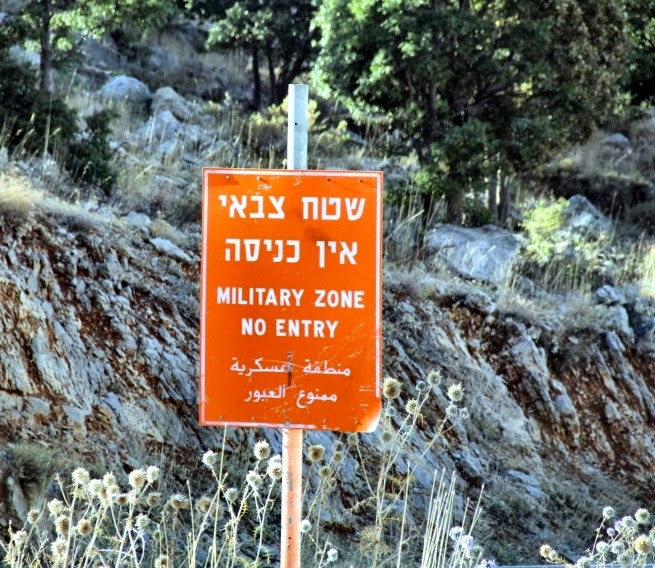 During the early part of September 2013, Meridel traveled to the Golan Heights, specifically to the Druze town of Majdal Shams, to investigate the effects the Syrian uprising is having on those living on the Israeli side of the border.
During the early part of September 2013, Meridel traveled to the Golan Heights, specifically to the Druze town of Majdal Shams, to investigate the effects the Syrian uprising is having on those living on the Israeli side of the border. The town of Majdal Shams is primarily Syrian Druze, and many have immediate family members just a few kilometers away in Syria.
Located at the foot of Mount Hermon, it is the largest of the four Druze villages in the Golan with a population of about nine thousand.
The village has been under Israel’s control since the Six Day War of June 1967.
Since 1981 they have been considered to be “permanent residents” of Israel. The status of “permanent resident” in Israel, means that the people are free to travel, live, work and study anywhere in the country, and they are also entitled to state services such Kupat Holim health insurance.
Although they are invited to apply for full Israeli citizenship, only a scant ten percent of Golan Druze have taken this option. Those who do apply for Israeli citizenship can vote, run for Knesset and receive an Israeli Passport, but they are not drafted by the Israel Defense Forces.
It is no surprise that to this day, the Syrian authorities consider all of the people of Majdal Shams to be Syrian citizens. Syria longs to have control of the area, which would give them a prime vantage point from which to attack Israel.
With such a history it is not surprising that the residents are reluctant to appear on film, or make their views known. At least fifty percent have at least one sibling, parent, or child in Syria. Their fear for the safety of their families on the Syrian side of the border is very real. They also fear for their own safety as the ceasefire line runs directly along the eastern edge of town, leaving them open to “revenge” attacks.
Listen as Meridel provides some history of the area, and the people. Amazingly, she is only sixty kilometers from Damascus, and you can actually hear explosions in the background.
Meridel Reporting from Majdal Shams in the Golan Heights


Dear, dear friends I’m in the same boat with you, and still have that burning desire to bless Israel as you. I can and am praying for you. Love you dearly and smell sweet fragrance of memories of when we were toether in the Land of Promise. Those promises are more brilliant than ever today and we are closer to the Kingdom than ever before! (obviously) You have faithfully done much. Do not worry what you can’t do, but walk in His Spirit and He will flow through you for that is the power of accomplish-ment.I am now 88 and a little feeble and have eye problems, but it is WHO you are & knowing HIM – who He is – that is the greatest in life.
Chris Josephson.